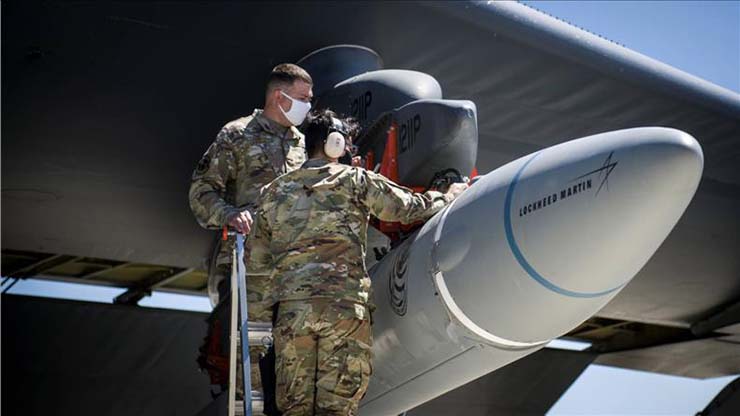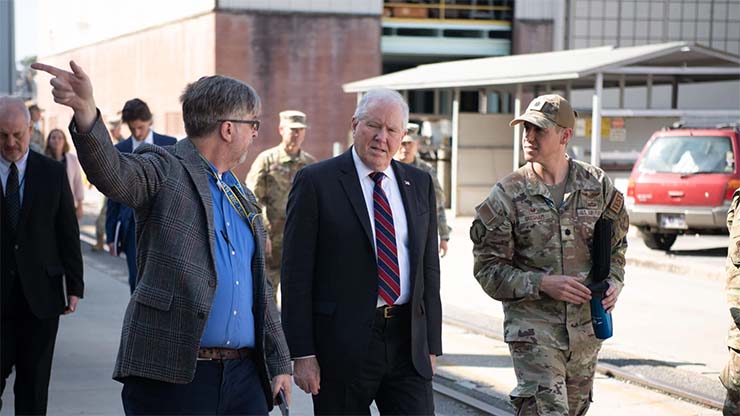
Denver (Colorado): Senior leaders of the Department of the Air Force (DAF) unveiled details of a sweeping reorganisation of the US Air Force and Space Force, a long-awaited move that the department’s top civilian has said is needed to “reoptimise” the two branches for “great power competition” with China.
All told, a total of 24 organisational changes are expected across the Air Force, Space Force and its civilian leadership, senior officials said in a keynote at the Air & Space Forces Association’s Air Warfare Symposium here. Timelines for the changes were not defined and many specific details still need to be ironed out, though some could take effect immediately whereas others will need “over a year” to be implemented, according to Air Force Secretary Frank Kendall.
Even though the revamp entails major changes across the organization, Kendall said today that no funds in the service’s fiscal year 2024 budget request, nor in the upcoming FY25 proposal, are being sought for the reoptimization drive. Officials will use budget reprogramming authorities to move funds around as needed, Kendall said, who noted some new money might be needed in FY26.
The Air Force is pursuing the bulk of these new efforts, with 15 major changes ranging from a different approach to nuclear weapons management to new warrant officer programs, according to Chief of Staff Gen. David Allvin. Some major changes entail how the Air Force deploys its airmen by adjusting how its wings are structured. Others involve education, with plans to expand Air Education Training Command and rename it Airman Development Command.
Additionally, the Air Force is looking to embark on more large-scale exercises to simulate the conditions of a fight with a peer adversary. The service is aiming to carry the first such exercise out in the Indo-Pacific region sometime in FY25, according to Allvin, who warned that it might present budgetary pressures.
One major change that had been widely expected does not appear to be happening. After a senior Space Force official suggested in December that the Air Force might be doing away with its current major command (MAJCOM) structure, Allvin disputed that, emphasising that the current MAJCOM structure will remain intact. However, some of their responsibilities like developing requirements will instead be transferred to the new Integrated Capabilities Command, he explained.
The Air Force’s secretariat civilian leadership — which helps craft policy and budget decisions — has a much smaller list of changes. According to Kristyn Jones, who is performing the duties of the Air Force under- secretary, the secretariat will stand up three new offices: an Integrated Capabilities Office, an Office of Competitive Activities and an Office for Program Analysis and Evaluation. (It was not immediately clear how the latter will work with the Pentagon-wide, service-independent Office of Cost Assessment and Program Evaluation, or CAPE.)

“These changes at the secretariat will help us to make the needed changes to stay ready and to be more effective,” Jones said. She did not specify where the staff for these offices might come from, or what other roles may be impacted as a result of creating them.
Among the planned changes for the Space Force elaborated by Chief of Space Operations Gen. Chance Saltzman, perhaps most critical is a revamp of service readiness standards to reflect that space is now a contested domain, rather than a “benign environment,” according to the Air Force’s press release.
As it stands, Saltzman said, Guardians simply don’t have the right equipment, training and “operational concepts” necessary to deal with the new environment. To address the problem, the Space Force is creating a Futures Command — a name seemingly drawn from the Army’s Futures Command, which stood up in 2018 — to assess long-term needs, comprising three separate centres.
The first, the Concepts and Technology Centre, will be dedicated to look at what will be needed as the threat environment changes, Saltzman said. The second will be focused on wargaming, and the third will build on the current Space Warfighting Analysis Centre (SWAC) to develop force designs to meet those future needs.
Finally, the Space Force will designate Space Force Combat Squadrons as “units of action” separated out from those units that undertake day-to-day missions, he said. These units will get advanced training to be able to “fight tonight,” he said, but provided little detail about how that would work operationally.
One of the first efforts to be able to address the new threats detailed by Saltzman will be a new officer training regime, which eventually will be expanded. That will involve not just training on how to operate systems, but also how to handle adversary actions. This will include changing training infrastructure, he noted. “We have to rewrite the standards for readiness cantered around a contested domain,” Saltzman said.
For his tenure as secretary, Kendall has stressed that the DAF is not prepared for a conflict with a peer adversary, namely China. To that end, at this same AFA conference in 2022, Kendall spelled out a list of seven “operational imperatives” that are aimed at tackling big initiatives like fielding all-domain command and control.
The reoptimisation, which Kendall first announced in September 2023, adds on to those imperatives and others like a separate effort known as cross-cutting operational enablers. Whereas those initiatives are more closely tied to specific modernisation challenges, today’s announcements are aimed at taking a broader look at how the Air Force itself is structured.
“We are out of time,” Kendall said of the pacing challenge posed by China. “We can no longer regard conflict as a distant possibility or a future problem that we might have to confront. The risk of conflict is here now and that risk will increase with time.”















